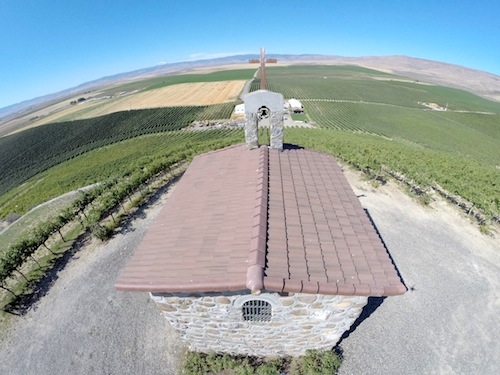
WAPATO, Wash. – In just about every conceivable way, the 140 acres of wine grapes here at Red Willow Vineyard are hallowed ground.
Here is where Washington’s first Syrah was planted. Here is where some of the Northwest’s earliest plantings of Tempranillo, Viognier, Sangiovese and Cabernet Franc went into the ground.
And atop a steep-facing vineyard is a humble stone chapel – perhaps the most recognizable building in the Washington wine industry.
For owner Mike Sauer, the spiritual roots grow even deeper. Here is where he developed one of the great partnerships and friendships in the history of Washington wine. Here is where four generations of a family have farmed on the Yakama Nation reservation and in the shadow of rugged Mount Adams.
In this week’s Great Northwest Winecast, we head to Red Willow Vineyard to chat with Sauer. Here’s the interview.
[powerpress]
Mike Sauer and David Lake
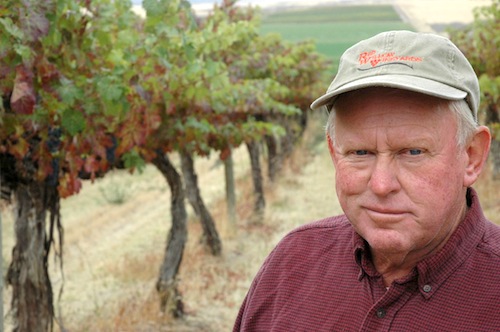
Sauer has been growing wine grapes here for nearly 45 years. He started out with Chenin Blanc and Chasselas – which didn’t work out too well – and now his oldest grapes are a block of Cabernet Sauvignon planted in 1973 that now go to David O’Reilly of Owen Roe.
This has long been a diversified farm, with Concord grapes in the lowlands and wine grapes on the hillsides. Nearby are wheat and alfalfa.
In 1979, Sauer met David Lake, a British expat who had recently started making wine for Associated Vintners (now Columbia Winery). They met at a grape growers meeting; Sauer needed a ride back to the vineyard, and Lake was happy to oblige. This was the beginning of a great friendship and collaboration that would change the direction of the Washington wine industry.
“We were both relatively young at the time,” Sauer told Great Northwest Wine. “We had similar personalities. We were both perfectionists in some ways. If (I was) willing to experiment with grapes, David was always willing to make wine with it.”
Red Willow Vineyard and Syrah
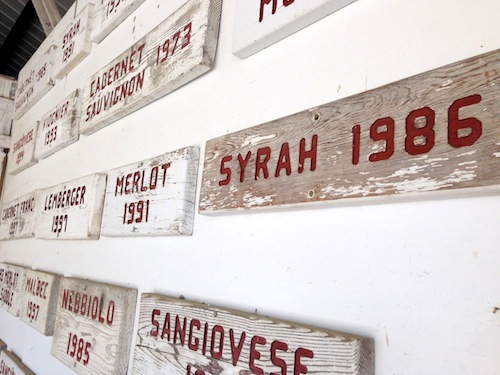
In 1983, Sauer was harvesting his Cabernet Sauvignon, and Peter Dow of Cavatappi Winery in the Seattle area asked him to plant some Nebbiolo.
“We decided to go ahead and plant an acre of Nebbiolo,” he said. “When David heard about that, he thought we should plant Syrah, so we thought we’d try that, too.”
Lake helped secure cuttings from one of the few vineyards in California that was growing Syrah at the time, and Sauer put them in a nursery for a year before putting the vines in the ground in 1986.
Immediately after the vines were planted, Sauer, Lake and their crews had a barbecue. Lake had brought a few bottles of great French Syrah, including Côte-Rôtie and Hermitage from the northern Rhône Valley.
“David recognized at that time that it was part of history being made,” Sauer said. “I didn’t – I was planting more grapes.”
After the barbecue was over and the wines were consumed, Sauer and Lake went up into the new Syrah block, dug a hole and buried the bottles – “so the vines would know what they should be thinking about,” Sauer said.
He can’t recall what row they’re in, but the bottles are still there today.
Another Master of Wine arrives at Red Willow Vineyard
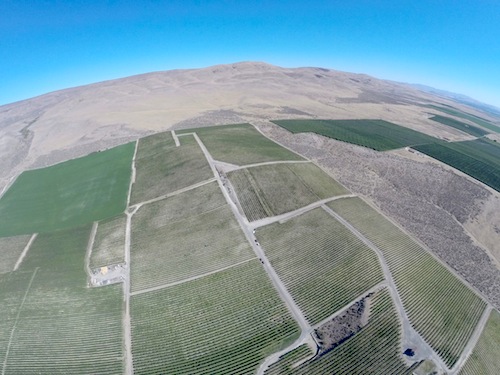
Lake died in 2009 after a series of lengthy illnesses.
“It was a tremendous loss to the industry,” Sauer said quietly as he thought of his dear friend. “David made me feel like the wines were mine, and I made him feel like the vineyards were his.”
Now, Sauer shares a friendship with Bob Betz of Betz Family Winery in Woodinville, who also is a Master of Wine and was good friends with Lake throughout the years.
“Bob is one of the important pillars in the state of Washington,” Sauer said. “Bob and David were similarly cut.”
Betz, who has an uncanny sense for place and history, now purchases some of the Syrah from that original 1986 block and produces a wine called La Côte Patriarche – an homage not only to these old vines but also to honor Lake and Sauer.
After Lake retired, Columbia cut back on the amount of grapes it bought from Red Willow. Today, the Gallo-owned brand no longer gets any grapes from here. Instead, such wineries as Owen Roe, Efeste, DeLille, Gramercy and Westport are among the 18 producers that receive the grapes – and many produce vineyard-designated wines from them.
Red Willow Vineyard’s chapel
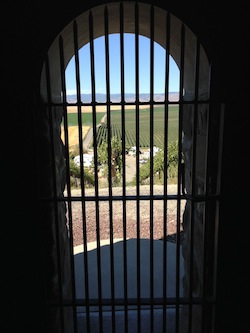
High atop a steep-faced hill is Red Willow Vineyard’s most prominent feature: a stone chapel. It enjoys a remarkable likeness to Jaboulet’s La Chapelle overlooking the Rhône River in Hermitage.
Though Lake was not religious in nature, he was primarily responsible for the chapel being built.
“The genesis of this would go back to David,” Sauer said. “He said we needed a chapel.”
The Sauers are a spiritual family and liked the idea of a chapel or other quiet place where they could stop and reflect. While visiting Europe, Sauer noticed that many hillside vineyards had stone structures such as chapels, grottos or crosses.
“We thought vineyards should have identities,” he said.
One of Sauer’s employees happened to be a stonemason from Mexico, so together they collected rocks from the estate in the early 1990s. By 1995, it was completed. Today, it is one of the most-photographed structures in Washington wine country – with the irony being that few consumers have ever visited the vineyard and seen the chapel in person.
Next generation for Red Willow Vineyard
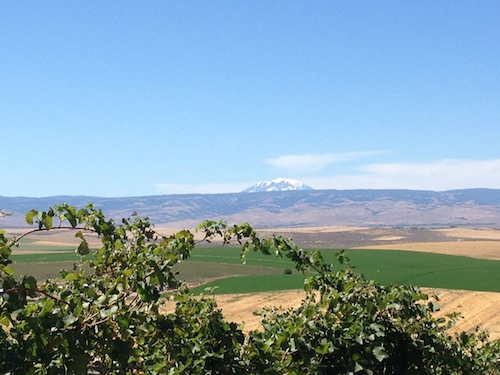
Sauer’s sons and son-in-law are now an integral part of Red Willow Vineyard’s operation. Sauer said his family has always seen the vineyard and farm from a generational point of view, rather than a commodity.
“We’re very hands on,” he said. “I’m very proud to have the boys involved.”
Sauer and his boys are in the midst of harvest, one that is different than any of those that came along since the 1970s – “should be one of the better vintages,” he said – but he and his family see it from a broader, more spiritual point of view.
Whenever he is asked to describe Red Willow Vineyard, Sauer reverently replies: “Continuity of generations.”

Leave a Reply